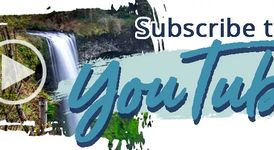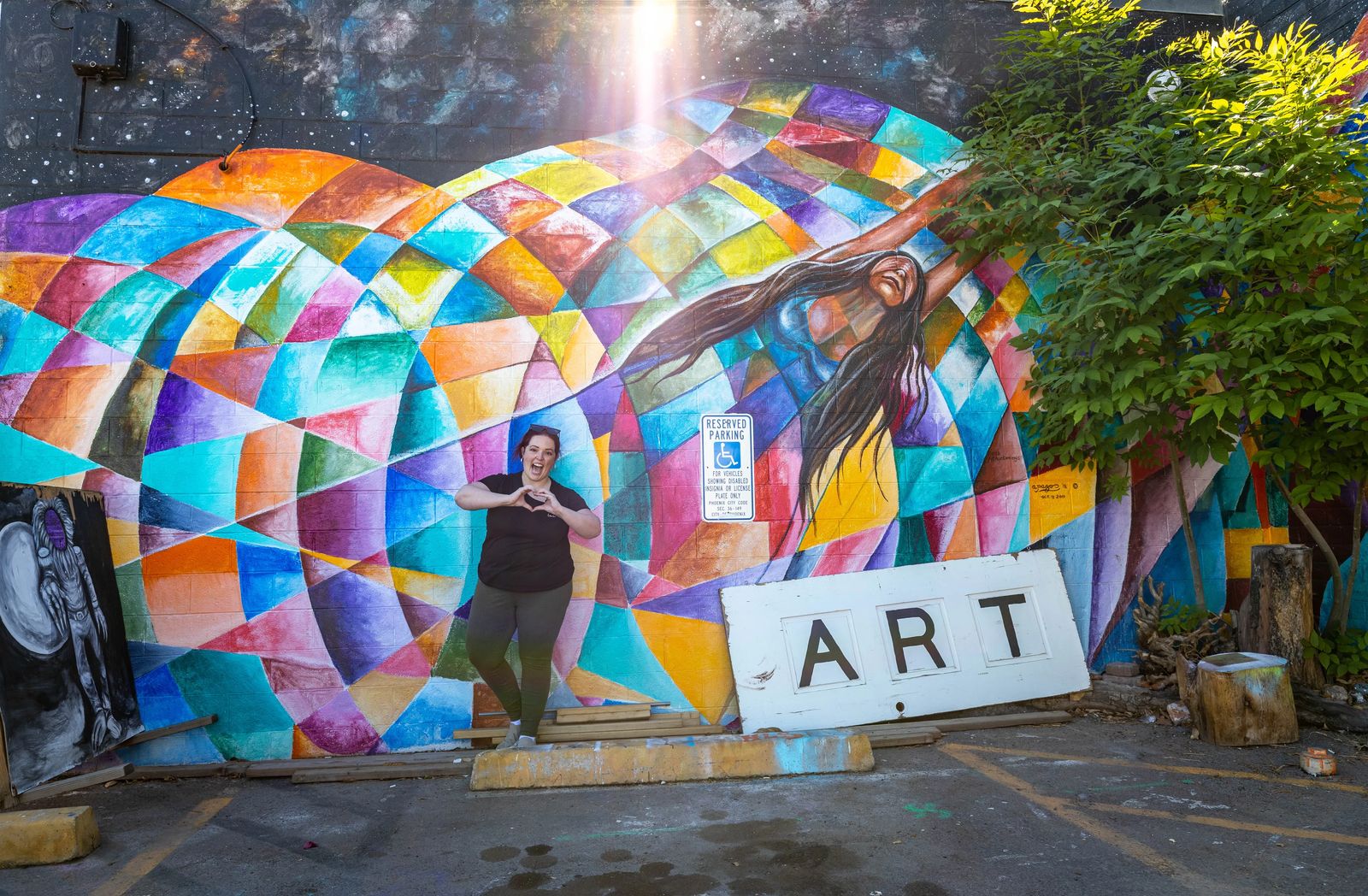
Things To Do In Downtown Phoenix in 48 Hours
When I think of Arizona, all I think about is the searing heat where people grill eggs on their sidewalks or in their car on their dashboard. However, Arizona is much more than just a state as a whole there are so many culturally diverse things to see and beautiful places to explore. If you are staying in downtown Phoenix, it might seem like a cement jungle. Yet I found plenty of things to do and see and educate myself a little more on how much there truly is to do there even if I was only staying for 48 hrs.
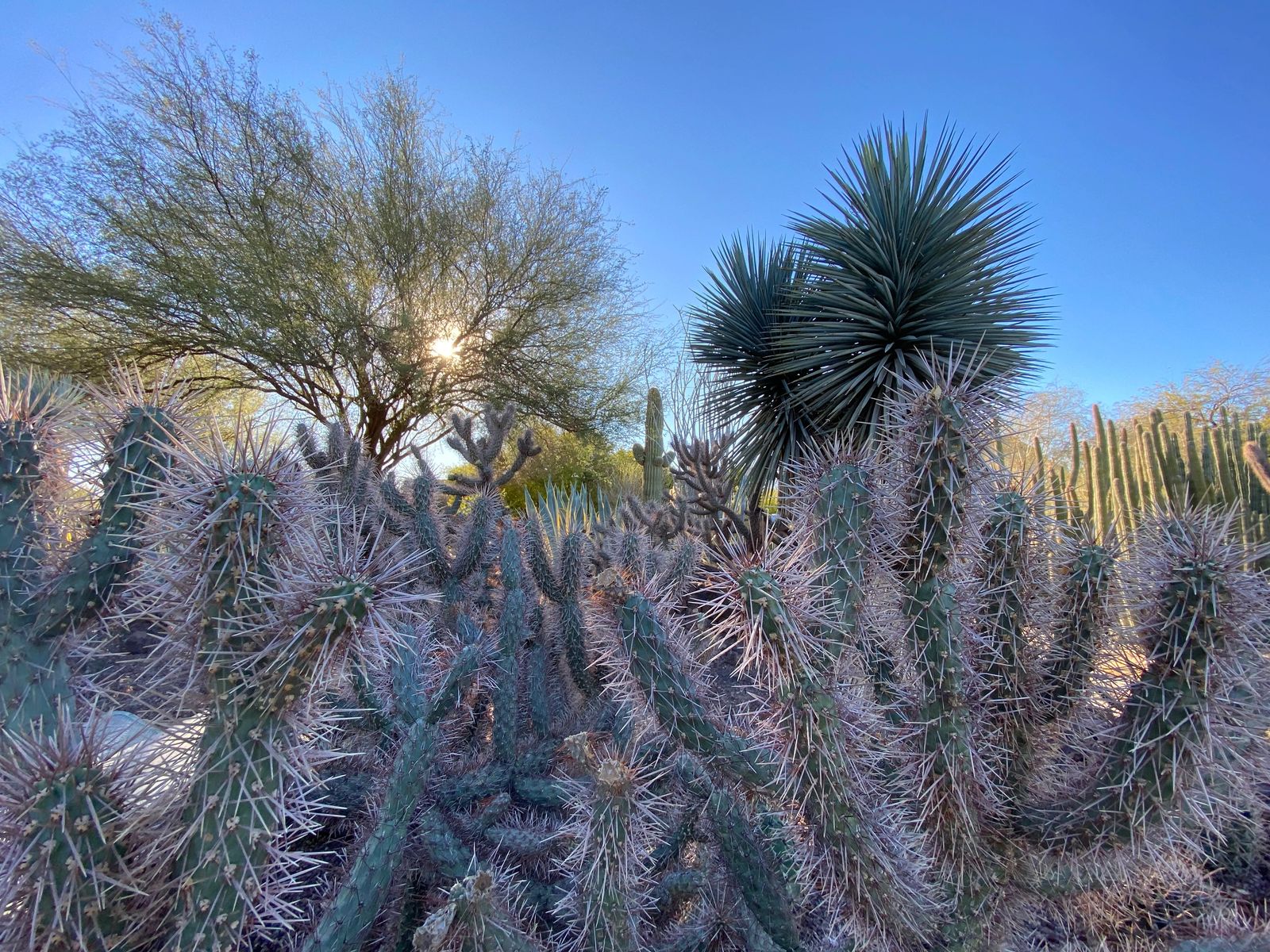
Quick Facts About Phoenix
Location: Phoenix is the Capitol in Arizona which is located in the southwestern United states near New Mexico and California.
How To Get Around Phoenix: There are Ubers, Lyfts and Taxi's available from the Airport. The Taxi area is on one side of the Airport and the Rideshare (Uber/Lyft) are the on the other side of the airport. I found that using Lyft to get around the city wasn't too expensive as most of the highlights of the city were quite close together and can be done in clusters. They also have the Valley Metro Rail that runs East and West, and several E-bike rentals throughout the city. If you do decide to rent a vehicle, just know parking is paid parking in the city, but free on the outskirts for the most part.
Best Time To Visit: The best time to visit Phoenix is in the Spring, Winter, and Fall . Because of the Summer month temperatures getting up to 117 F (47.2C). Monsoon season typically begins in June and lasts til September.
How Long To Stay in Phoenix: If you JUST plan on exploring Phoenix, then you only need about 3-4 days. IF you are planning on exploring Mesa, or Tempe - then I would give yourself at least 2 weeks to explore it all. Be sure to check out my post on Things To Do In Mesa, Saguaro Lake Ranch, and my Hot Air Balloon Ride over the Sonoran Desert posts and videos to give you an idea of all the wonderful things you can do in Phoenix and surrounding areas.
Best Things To Do in Phoenix: Foodie Trails, Breweries and Wine Trails, Mural hunts, Museums, Native American History, Botanical Gardens, Hiking, Fishing at Papago Park.
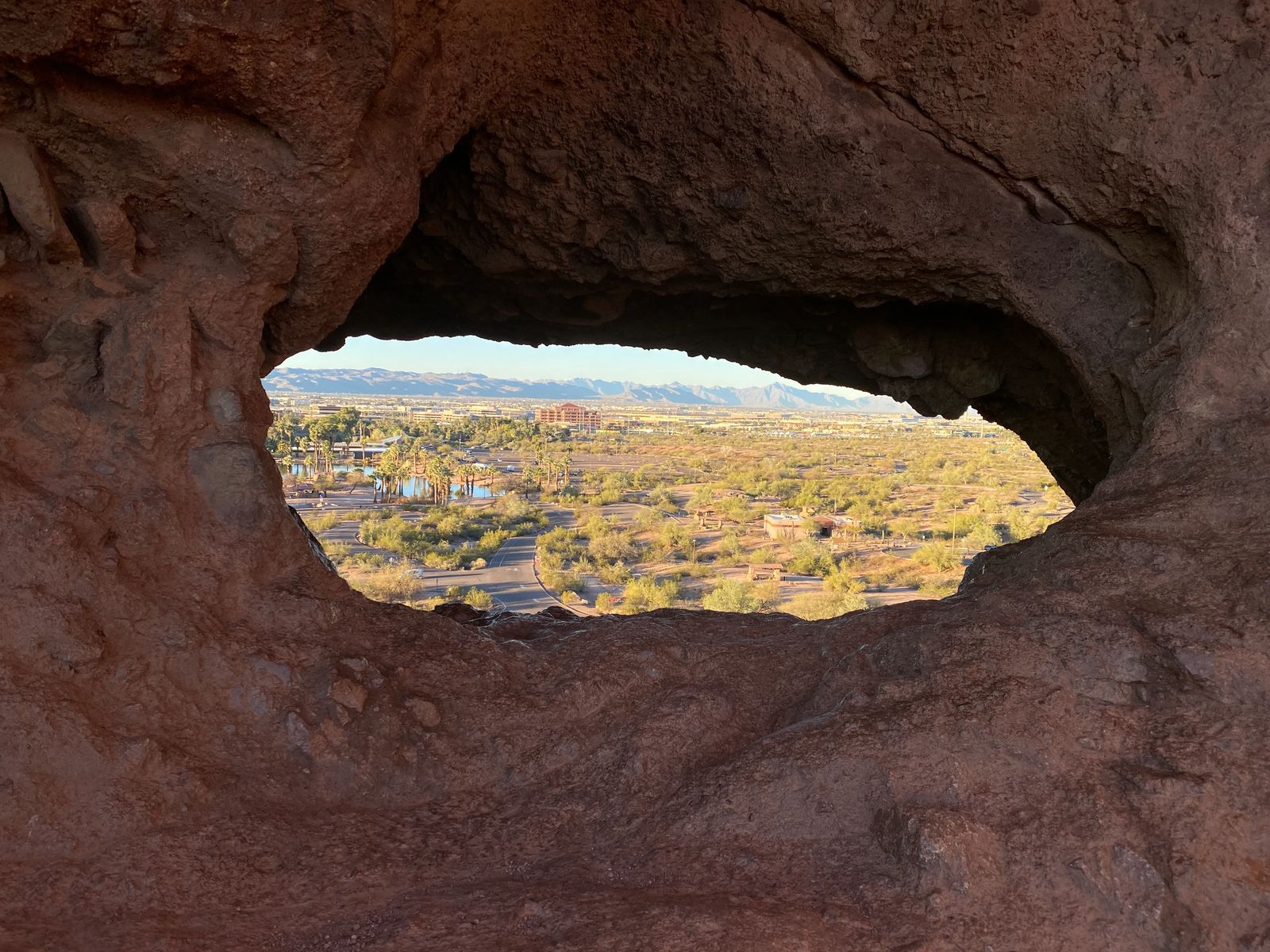
What To Eat in Phoenix: BBQ, Tacos, anything Prickly Pear, artisanal Pizza, local wineries and breweries are a must as well.
Finding Sustainable Places to Stay: I typically will use booking sites like Charistay or Kind Traveller to book my accommodations. These sites work with hotels who pay fair wages, employ locals, are independent hotels and are conscious of their impact on the environment. They also give a portion of their commission to local charities or NGO's in need to ensure that they are having a positive impact in the communities.
Staying Healthy and Safe in Phoenix: There are a few neighborhoods I would recommend avoiding after dark: Central City, Alahambra, and Encanto. These neighborhoods have the highest crime rates as compared to the rest of Phoenix. I would also be sure to bring sunscreen, plenty of water, a hat and sunglasses. Don't leave purses or wallets lying out or far from where you are sitting or standing. If you are there during Monsoon season, don't cross roads that are flooding, make sure your in a hotel/high ground if there is major flooding.
Money Recommendations for Phoenix: Most places take card, but the National Monuments and Camping nearby typically don't take cards so make sure to bring cash in small bills.
Festivals in or near Phoenix: Scottsdale Art Festival, Arizona Aloha Festivals, Phoenix Tequila Festival, McDowell Mountain Music Festival, Food City Tamale Festival, Arizona Fall Fest, Tempe Festival of the Arts, Arizona Polish Festival, Lantern Festival -Lights of the World, and Arizona Chinese Lantern Festival. There is also the First Fridays on Roosevelt Row where hundreds of artists bring their creations to sell and be celebrated (about 20,000 people can filter through on one weekend here - it's a pretty big deal).
Language in Phoenix: Everything is in English, but many people here also speak Spanish.
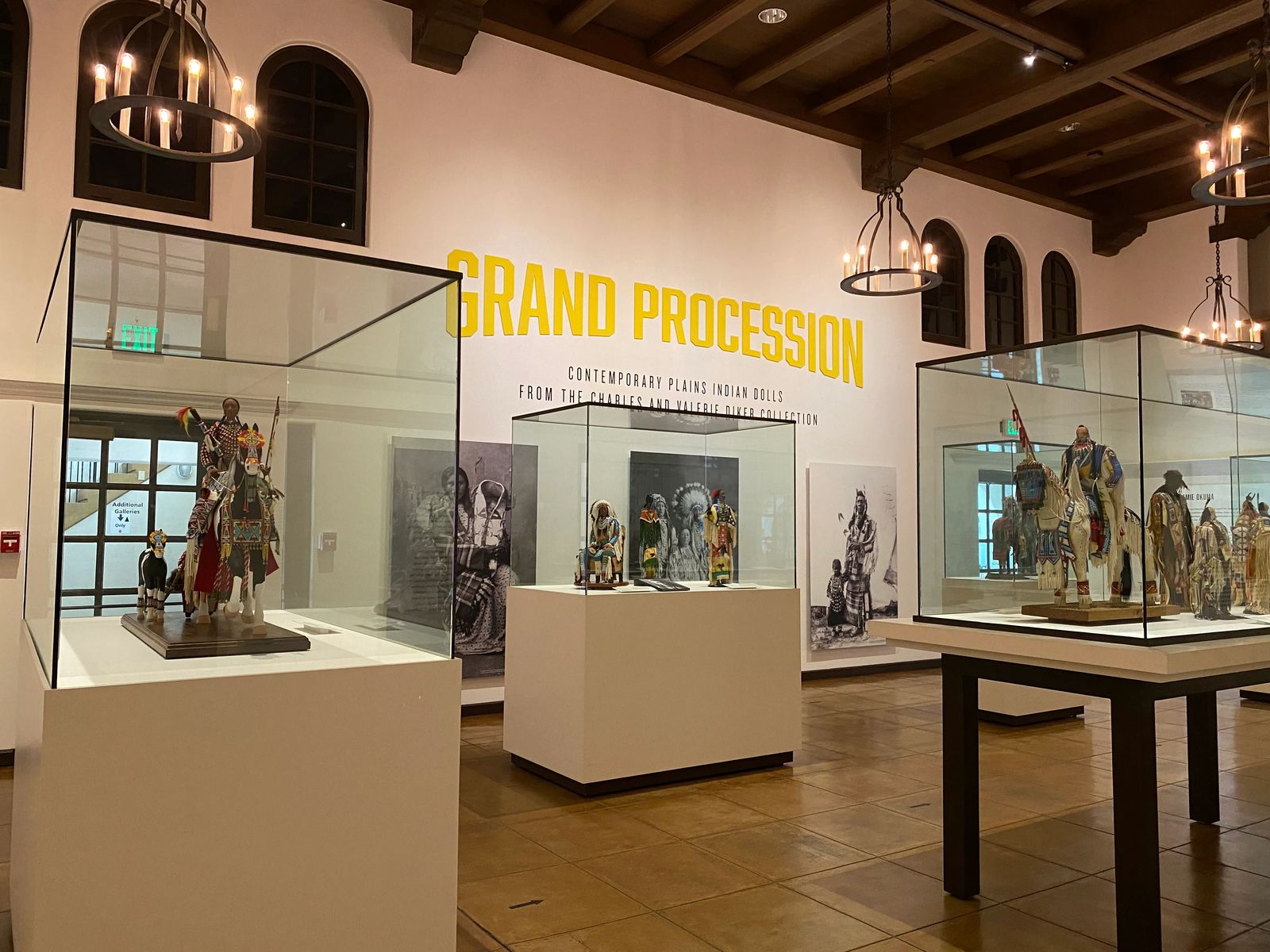
Heard Museum
Founded in 1929 the Heard Museum is growing in size exponentially. They have world-class exhibitions not just because of what's inside but what they try to focus on, American Indian art and the advancement of that art. When I visited they were exhibiting 45 exquisite textiles from contemporary Navajo weavers. Textiles plus dozens of more permanent collections of Native American peoples that include 40,000 Native American objects.
It's a comprehensive cultural extravaganza, and I learned quite a bit about what textiles mean, about the people, and what they did, and how they traded among other tribes.
Like the Hopi Katsina dolls, they are carved to represent the Katsinam, the spirit messengers of the universe. The Katsinam come to the Hopi in the Form of clouds which bear life-giving rain. They appear and hope you villages between the winter solstice and beginning of the monsoon season in July. There are several different types of dolls, with several different meanings like the Soyoko Katsinam which helps teach children proper behavior. Their parents threaten to give them to Soyoko if they misbehave. Dolls are also given to girls to help them learn their responsibilities as women in the community.
Traditionally these Hopi dolls were made by men, using the dried cottonwood roots, and were carved flat, and today are full figured, with lifelike movements in their stances.
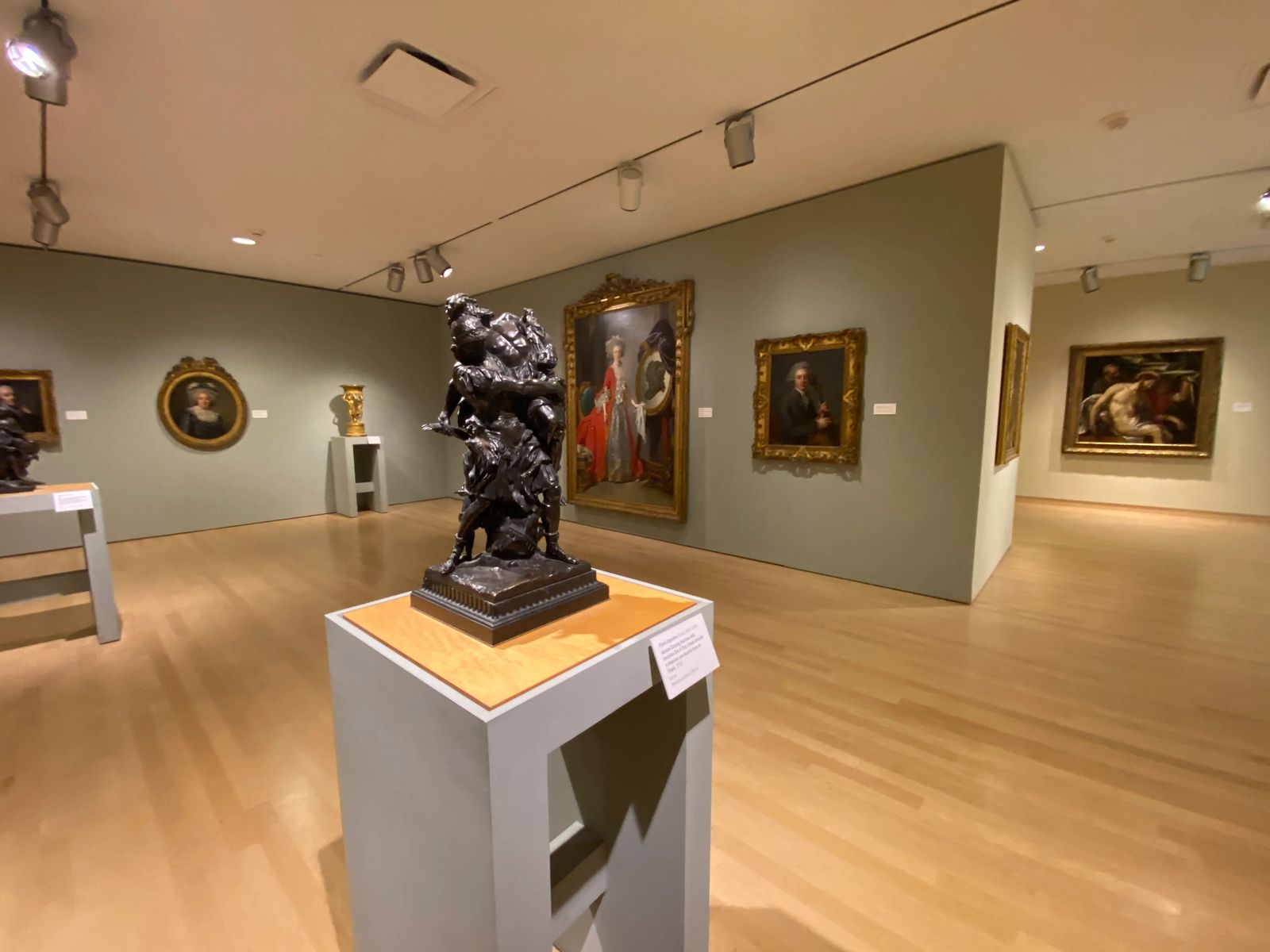
Phoenix Art Museum
The Phoenix Art Museum is the largest museum for visual arts in the southwest United States. This museum has been open for more than 60 years and has a collection of more than 20,000 Objects with 300,000 gas per year. They have everything from European art to hats made completely from clothes pins.
There are special exhibits that rotate through every month. When I was there I was able to see an exhibit for Ansel Adams as well as a small room that looked like you were surrounded by fireflies, an immersive experience that really was quite peaceful. It cost about $25 to get into the museum, but I do know that they have times and days where you can enter for free so be sure to check out their website.
My favorite exhibit was actually the modern art exhibit, the fashion exhibit, the Ansel Adams exhibit, and I don't know if it was an exhibit or not but there were some pretty weird statues there but I was making up some funny stories in my head as I went and viewed them.
That is why I love art museums, because my imagination goes wild – and as I age that's the most important thing that I want to hold onto. As we age one of the first things to go, is to lose our imagination, because we don't use it anymore – unless we make an effort to.
This is why art is so important to continue to celebrate no matter who makes it or how you interpret that part. I love that Phoenix is a place that celebrates artists, and continually tries to support them - so we don’t lose this essential craft.

Musical Instrument Museum
This musical instrument Museum has a unique start up story. The founder Bob Ulrich, who is the CEO of Target, was inspired to make a museum about instruments from around the world and not just western classical instruments.
While I My focus during this trip was not about music, it does play a major role in my life as my father has his Masters in music. I love that this museum celebrates cultures and music from around the world, sometimes there are people who don't even get to travel outside of their hometown. So to be able bring your kids into a space like this where they have activities, tours, and educational experiences or sometimes you can even play some of the instruments from around the world is incredible to me.
This museum has more than 8000 instruments from over 200 countries from around the world. And I love their motto that music is the language of the soul, they make sure that the experience of visiting this museum moves your soul. I can't wait to go back to experience this for myself, once COVID it is over and I can do a whole article and video on music from around the world.
Be sure to check out their events page, to see when concerts will start back up. I highly recommend attending both the museum and a curated concert. Tickets for museum admission range from $0 to $27 dollars depending on what you want to see, and it is recommended to spend at least 2 hours here just for the museum.
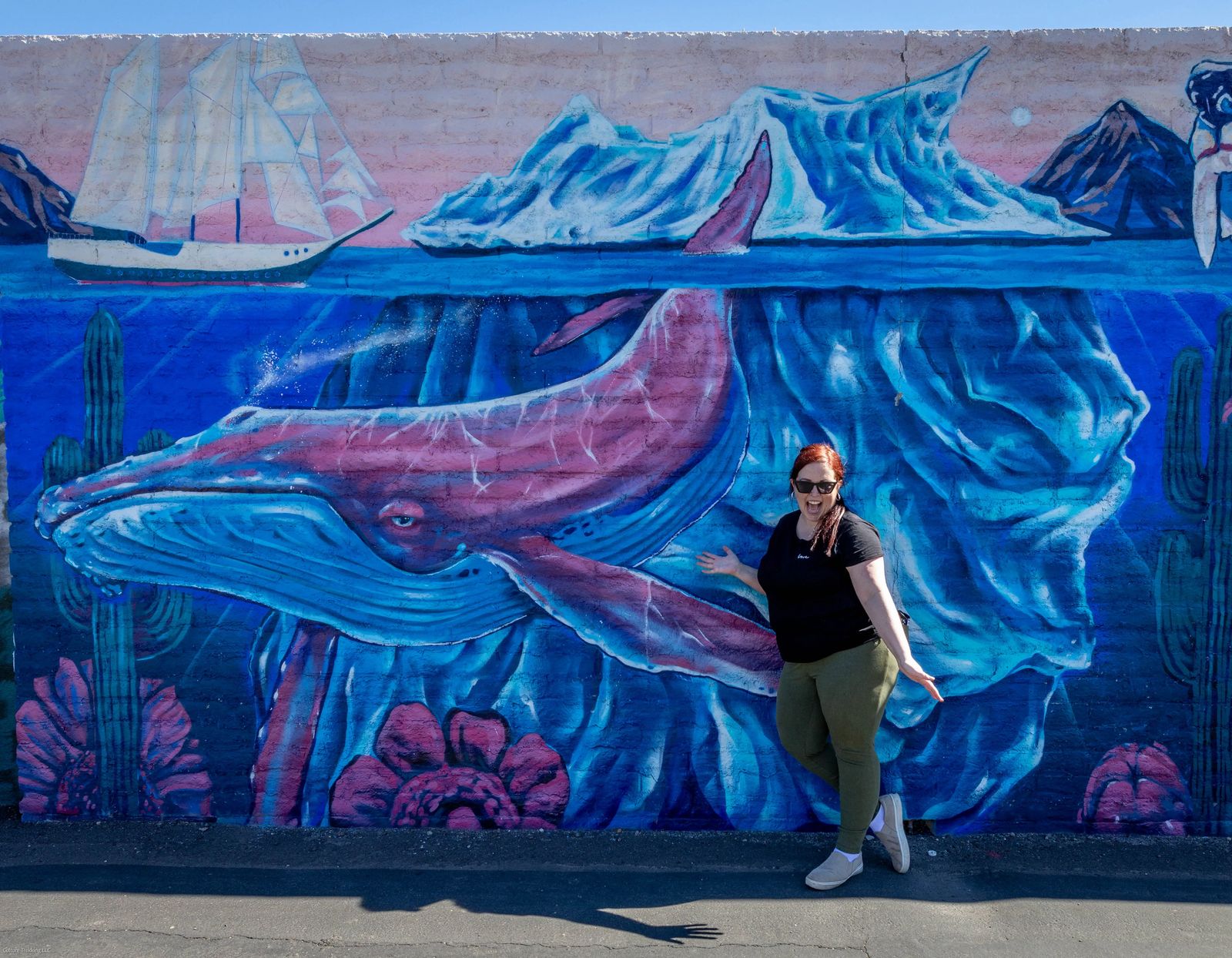
Roosevelt Row Murals and Food
The Roosevelt Row Community Development Program is a non-profit program that inspires local artists and seeks to bolster the small business and improve the area from what used to be full of crack houses and run down buildings.
This program has been an operation for the last decade. There can be up to 100,000 new visitors each year, the Roosevelt Row arts district is continuously evolving urban canvas that has become nationally recognized for the important role the arts and culture role in revitalizing cities.
While I was visiting I also found out about a Black Lives Matter movement happening in Roosevelt Row over the last year (2021) with over 30 murals commissioned to celebrate important figures in Black history.
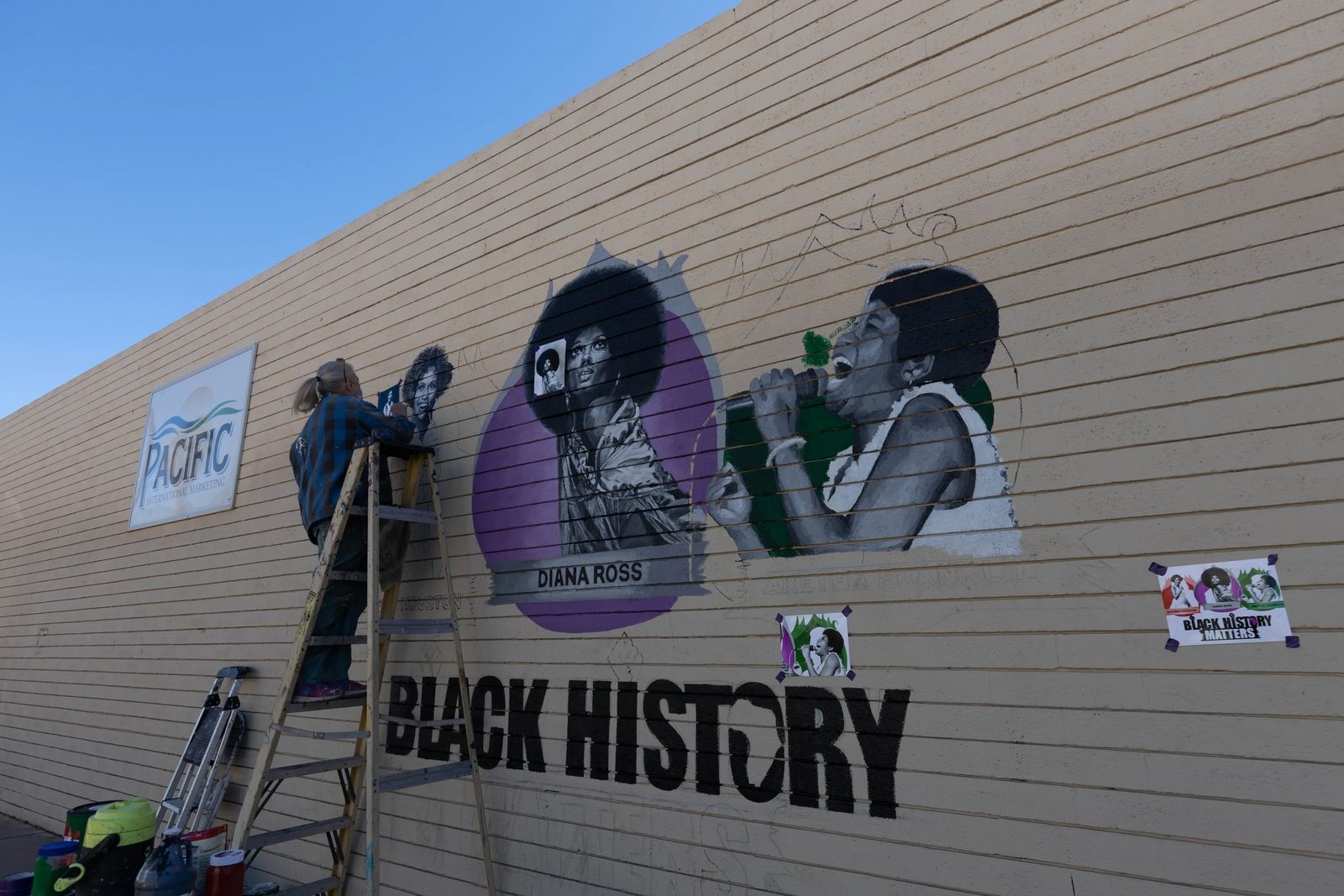

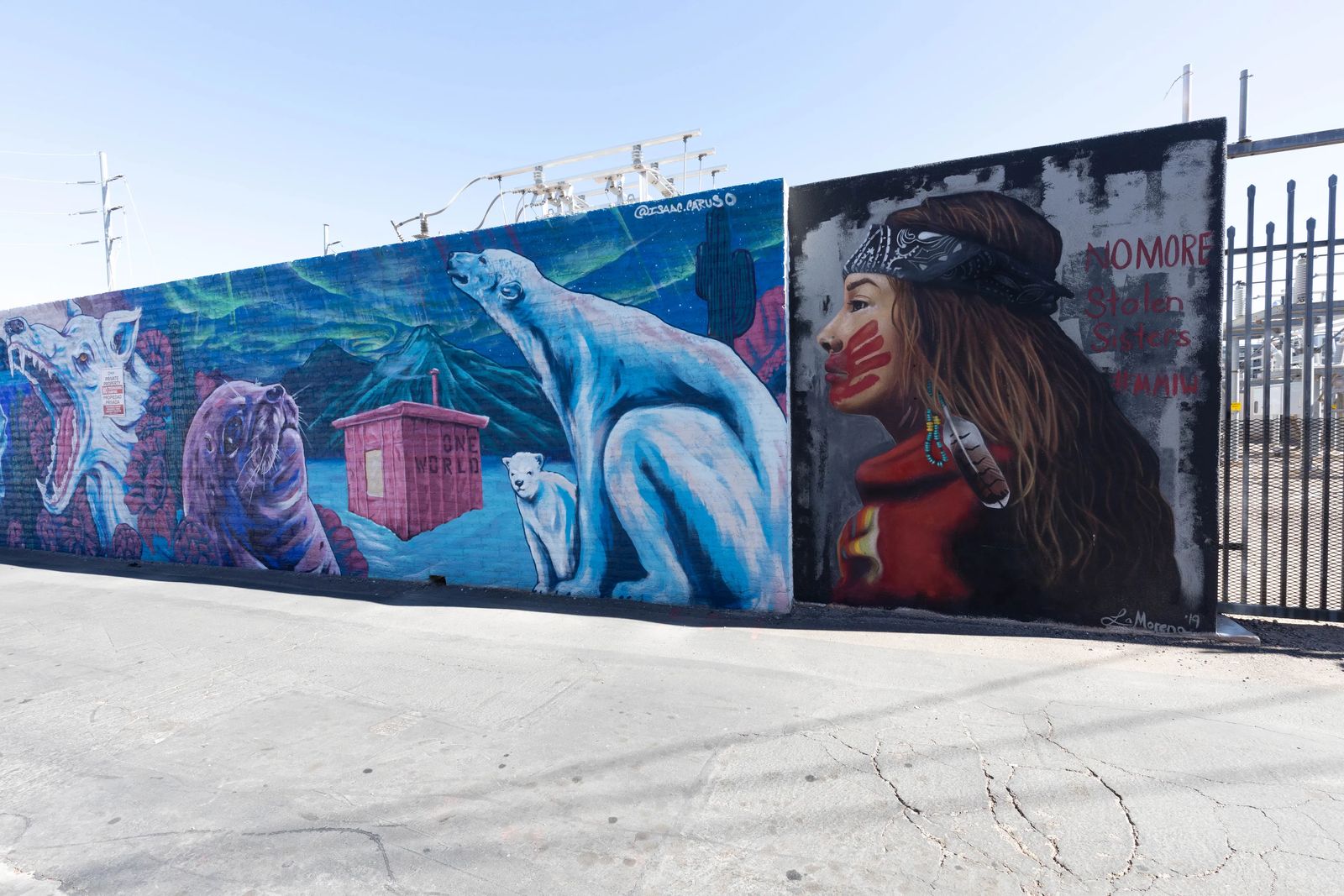


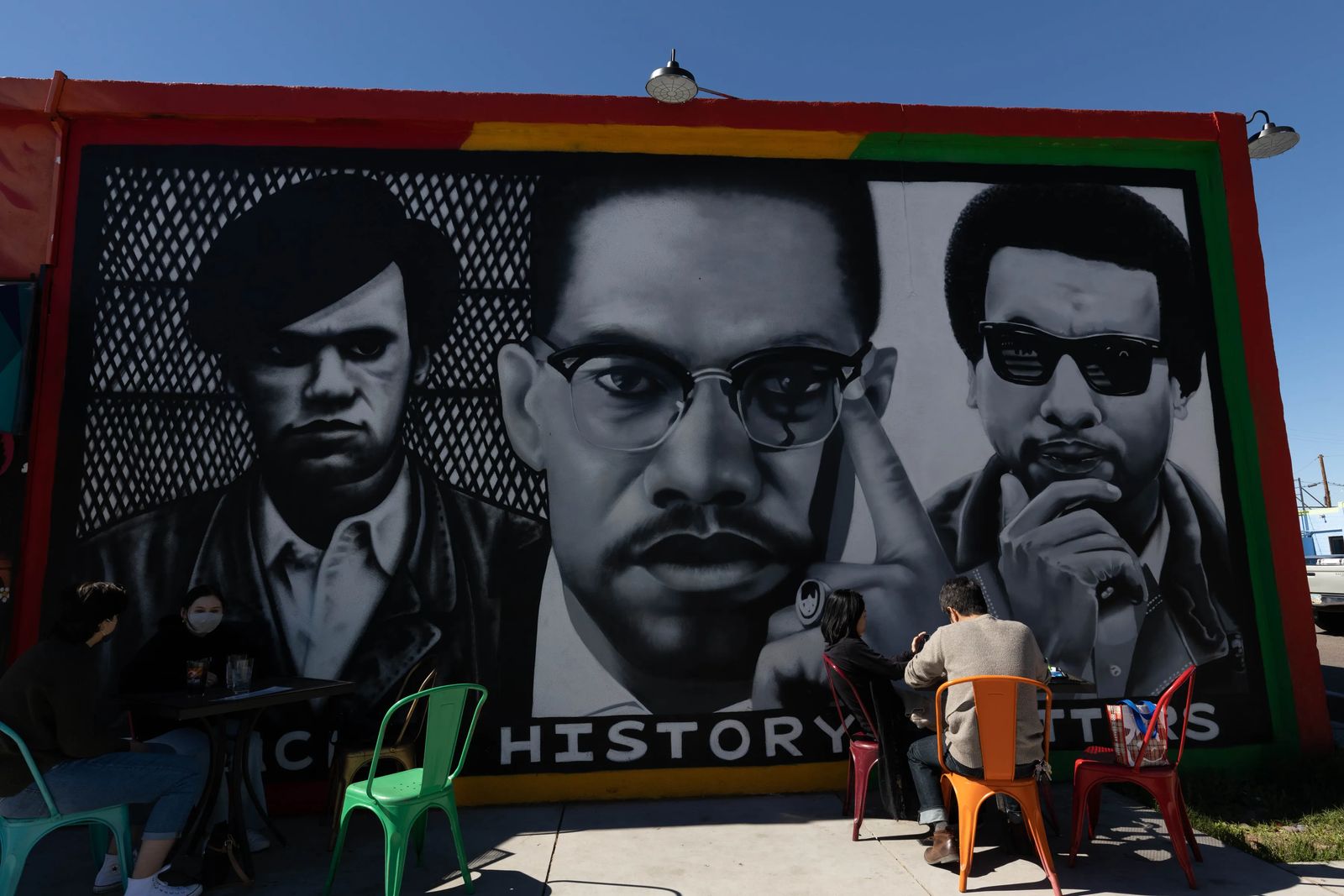
While Roosevelt row is free, I do recommend going into the visitor center and getting a map. Right across the street is an E-bike rental shop, there are several miles of murals along this road you want to stop at. It is also a great place for delicious food, boutique shops, and the flower shop on Fifth Street that has been in continuous operation since 1948.
This is not an area that you're going to want to miss. I would plan on spending at least half a day in this area. Especially plan for more time if you're going to visit Roosevelt row on one of the First Fridays of the month. Prior to COVID, hundreds of artists would gather in this area with sometimes up to 10,000 people visiting on one weekend. The artist would gather and sell their products, and really it is the biggest farmers market in Arizona. While they did have to pause for COVID, they are actively looking for ways to restart this program in a safe way.
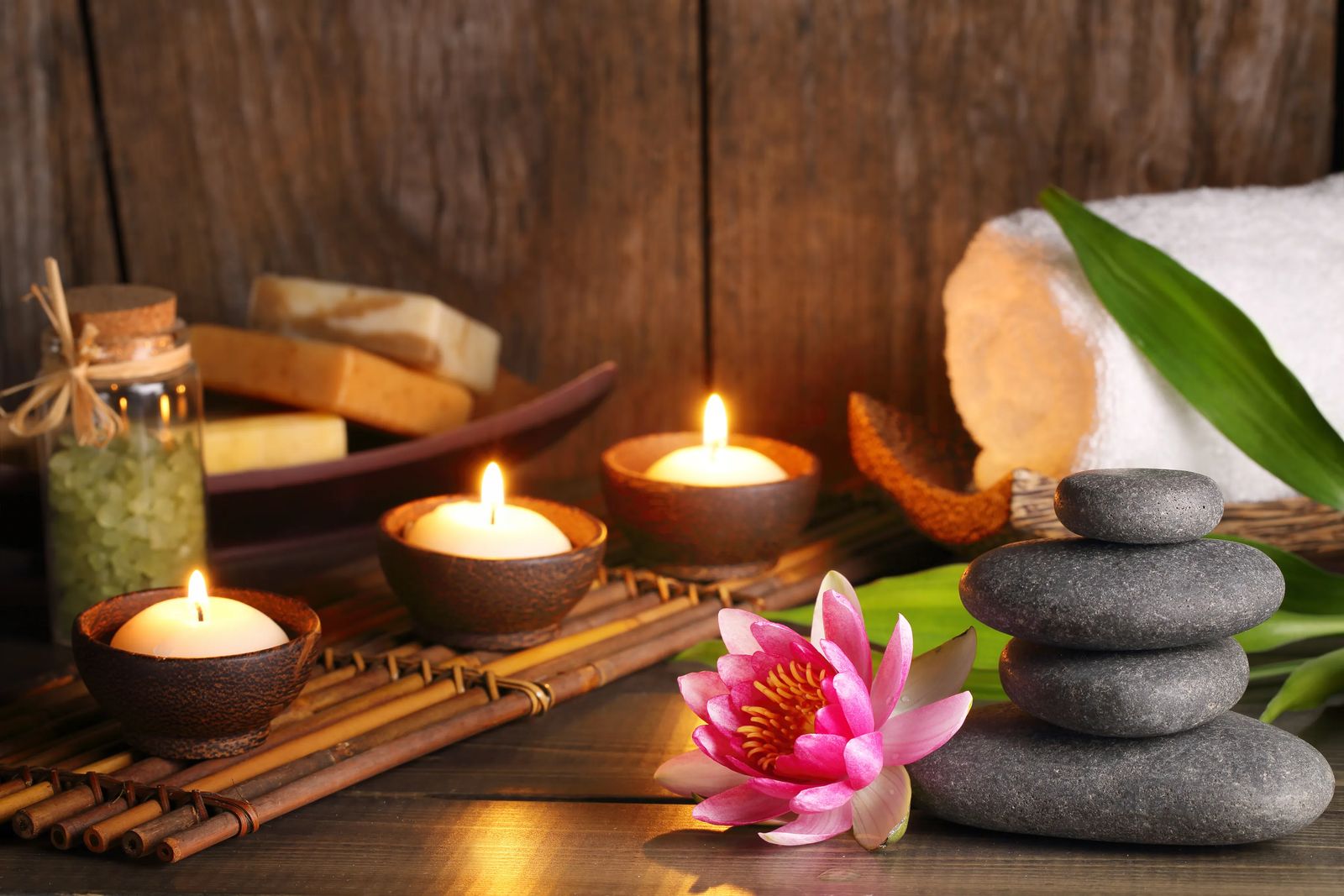
Spa Treatments
If you look back in history you will find that Arizona actually advertised itself as the ideal location for treatment of tuberculosis these were known as sanatoriums. They had courtyards with individual rooms and each sanatorium could take care of about 120 people. Early facilities were designed as resorts with doctors and nurses and they used different methods for treating patients like fresh air, rest, great food, and exercise - not too far off from what is offered there today.
It wasn't Long after the military, and federal government suppressed and oppressed the Native American population and confined them to reservations that they opened up the area for tuberculosis tourism. Oddly enough, if they would have partnered with them, they likely could have had many other more sophisticated ways of treating the symptoms of Tuberculosis from their extensive knowledge of plants.
Spas in Arizona are renowned for their healing properties clear back to the 1800s, they are not much different today. Now there are luxurious spa treatments like vibrational sound healing, massages, sacred prickly pear body treatments, turquoise sage Stone massage, vita D brightening scrub and facial, and treatments that will leave you feeling like a Greek God or God reborn.
While I didn't personally get a spa treatment while I was there, it is definitely on my list when I return. However, I will likely seek out a Native American spa treatment myself, because I feel it's the right thing to do… So if it exists, or you have one you can suggest please be sure to drop it in the comment section below and I will include it here.
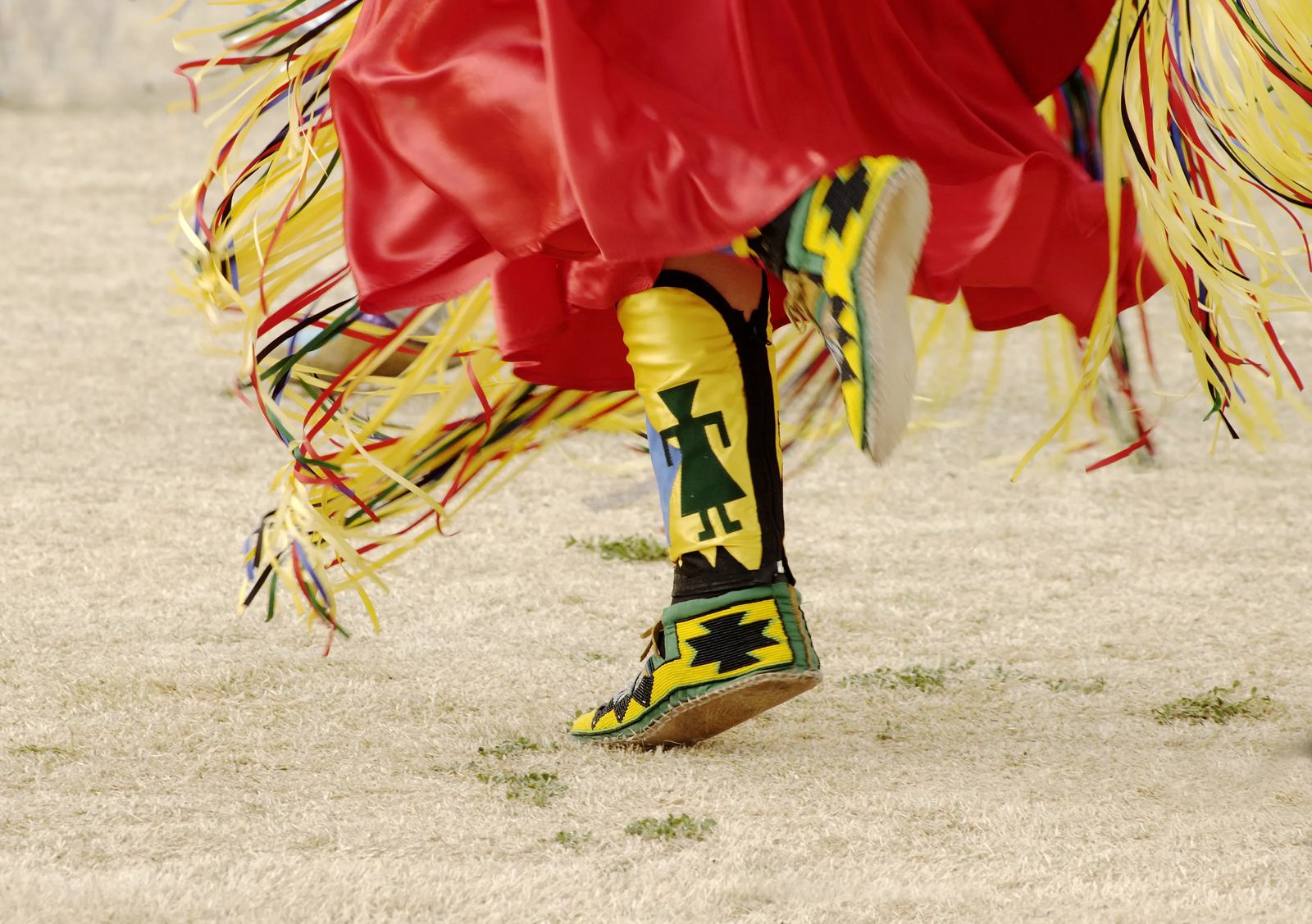
Native American Experiences in Phoenix
Many of the Native American sites that were in Phoenix have drastically changed over the years, since the 1800s. There are still some ways to experience the Native American culture in Phoenix and support the tribes here.
There are over 22 federally recognized tribes with 44,000 indigenous people living in the Phoenix area. Some of the top places that you can experience Native American culture are the Heard Museum (see above), the Pueblo Grande Museum and Archaeological Park, the River Trading Post in Scottsdale, and the Fort McDowell Yavapai Nation and Adventures where you can learn about the Yavapai nation and south western culture. To get a taste of native American cuisine be sure to visit The Fry Bread House in Phoenix.
You can also visit the Phoenix Indian Center which is the oldest Native American nonprofit organization in the country. They are a nonprofit organization that offers services to help Native American communities to get employment, education and develop cultural enrichment programs for their tribes.
If you want to be a part of some of the Native American festivals be sure to visit Phoenix in October and November. You'll be able to witness the Native American Recognition Days and share their history through culture artwork song and dance.
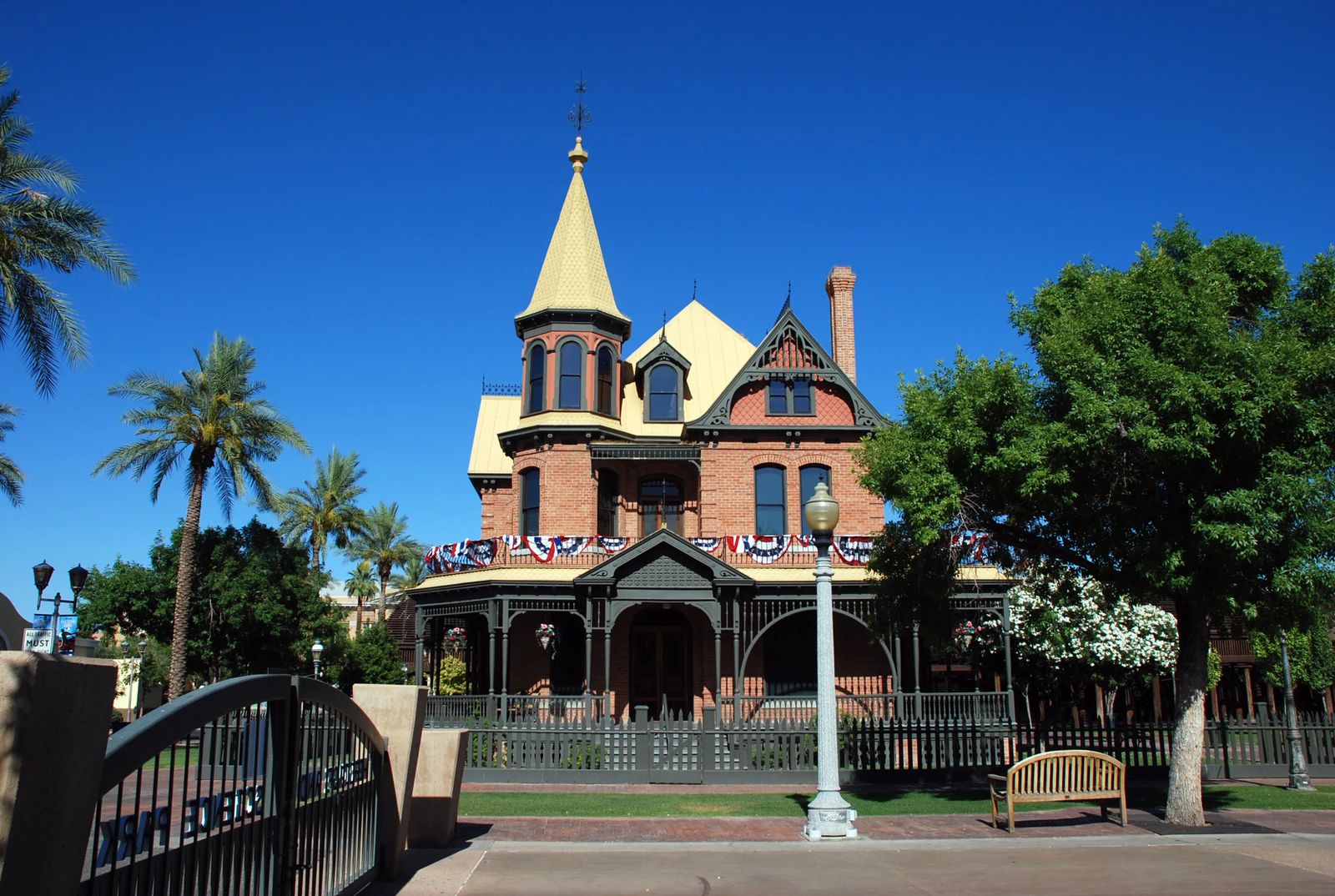
Heritage Square
In the late 1800s, Heritage Square was founded and is a great example of the Victorian era in Arizona. What is considered to be the crowning jewel of this square is the Rosson House Museum. The small town encompassed 320 acres, and contained 96 blocks.
There are 10 different fully restored homes in this area, with several eateries, galleries, restaurants, museum store, and a coffee bar where you can sit and have a nice relaxing picnic here.
While I didn't get a chance to visit heritage Square while I was in Phoenix, those who enjoy Victorian architecture may want to stop for a visit.
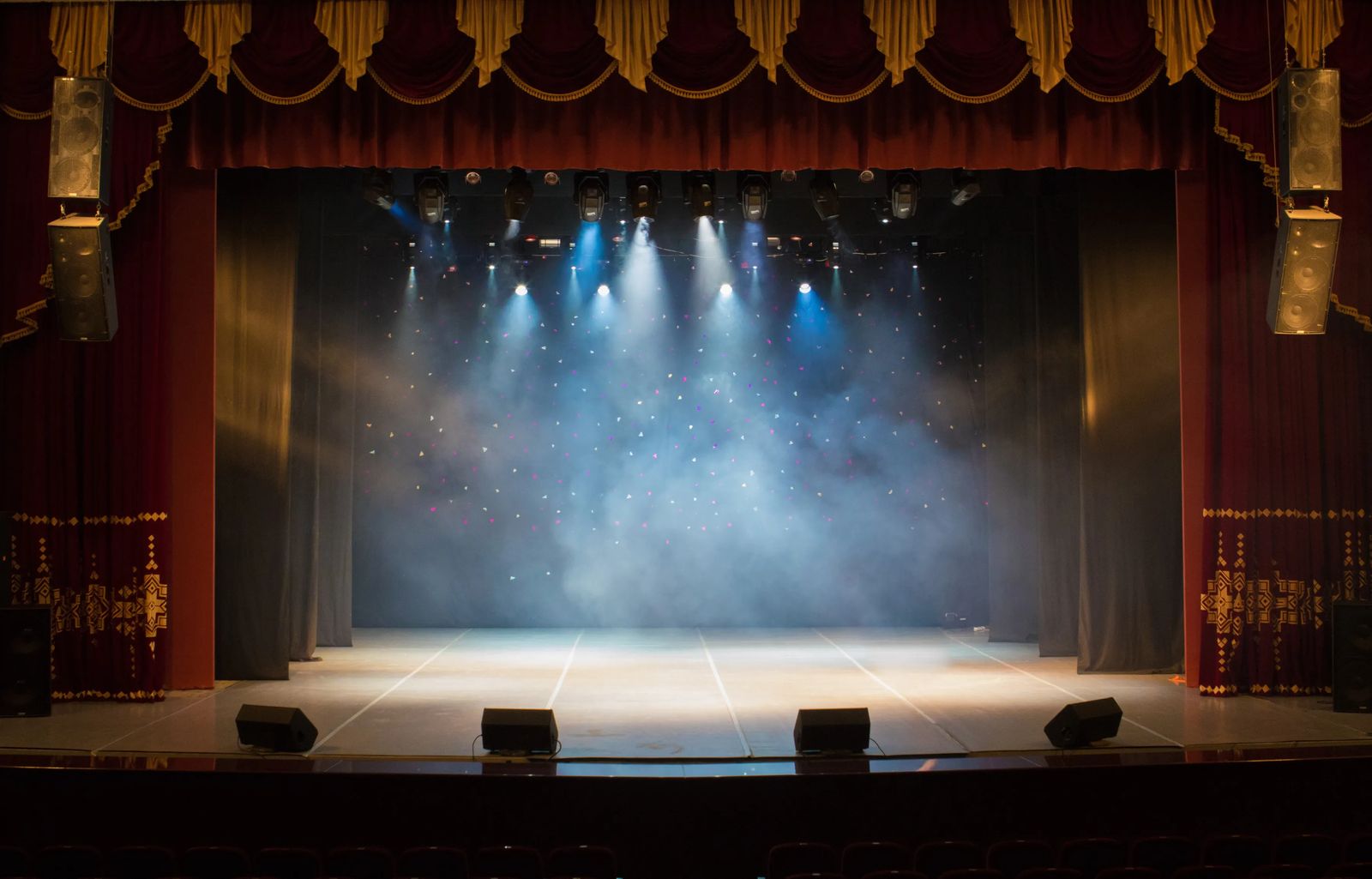
Orpheum Theatre
The Orpheum Theater is an integral part of the restored historic areas of downtown Phoenix. After 12 years and $14 million the Orpheum theater is now being used to host a variety of productions.
It was originally constructed in 1927 by Lescher & Mahoney in the Spanish Revival style of the Spanish Baroque architecture. As of 1985 the Orpheum theater of Phoenix was placed on the national register of historic places. It is now used frequently by the Phoenix opera, concerts, Broadway musicals, and ballet performances.
If you have more than 48 hours in Phoenix I highly suggest you catch a show, dress up and then eat the delicious food that Phoenix is known for for a delightfully romantic evening.
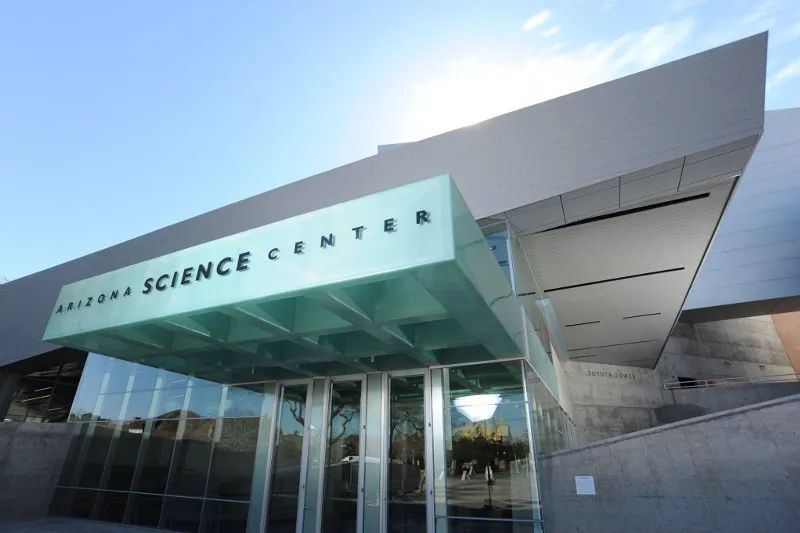
Arizona Science Center
The Arizona Science Center in Phoenix Has over 200,000 ft.² to explore. If you are visiting Phoenix in summer, museums are the best place to escape and find out more about things that will expand the mind and sharpen the senses. The funnest part about science centers to me, is being able to see kids light up with joy when they learn something new.
The science health center has a planetarium theater, an astronaut exhibition, body science, american Airlines flight zone, forces of nature, electricity educational area, the digital world and solar world, and making sense of your dollars, as well as the wonder center. It is extremely kid friendly with plenty of parking full accessibility to wheelchairs, and to food service areas should you or your family get hungry.
You can either do a self-guided experience or a guided experience with one of the staff members. Ticket prices vary, and due to COVID they still have timed entry with all of their tickets.
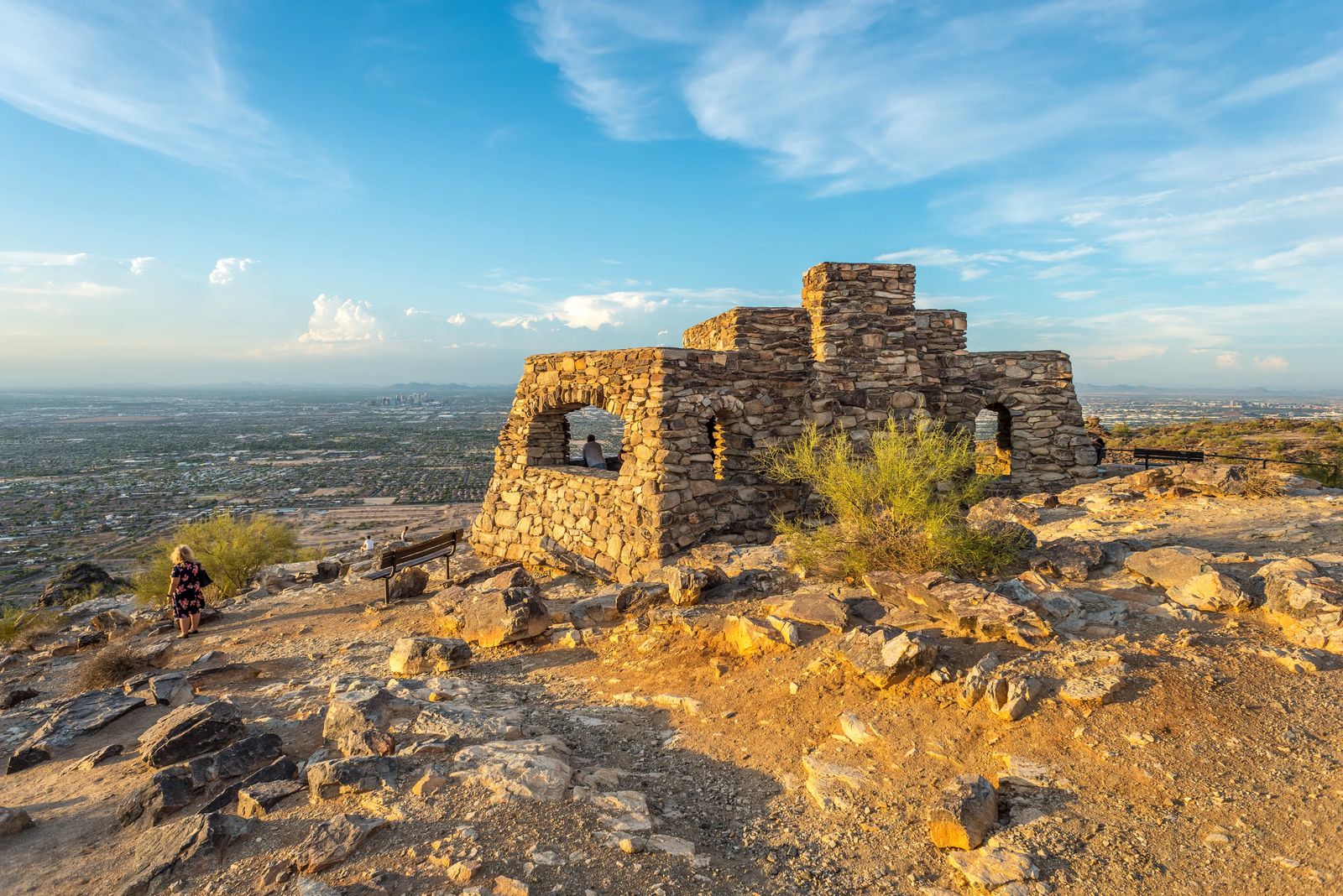
Dobbins Lookout At South Mountain
Dobbins lookout is located at South Mountain park and preserve. It overlooks 16,000 acres that have more than 50 miles of trails for hiking horseback riding and mountain biking.
Dobbins Lookout is at 2,330 feet along the Guadalupe Mountain Range. It is the highest point in the park you can either drive or hike to the area. If you are on a road trip from Phoenix to Sedona it is a great starting point to stretch the legs.
If you decide to hike to Dobbins Lookout, you will need to take the Holbert Trail. This is a 3.8 mile out and back trail that is rated as moderate. If you do it in the spring time there will be lots of wildflowers, there are dogs that are allowed on the trail but they must be on a leash. I wouldn't suggest hiking this in the summer as there is no shade, and in the spring there can be quite a few bees.
If you do decide to do the hike though you will be greeted by pre-Cambrian stone, and intricate symbols visible on the clip faces that were carved by the Hohokam people. If you look closely you will see water birds, turtles and sheep. As well as spirals and crosses as well as figures that commonly may represent medicine men.
As with any other hike or petroglyphs, you want to make sure you do not touch them or alter them in any way. These are irreplaceable images that we will never get back if they are damaged. If you see someone doing this please say something so it doesn't ruin it for generations to come.
Once you get to the top you will find a stone structure to provide the shaded overlook to the valley below. There are restrooms, water, picnic tables, and covered Ramada's.
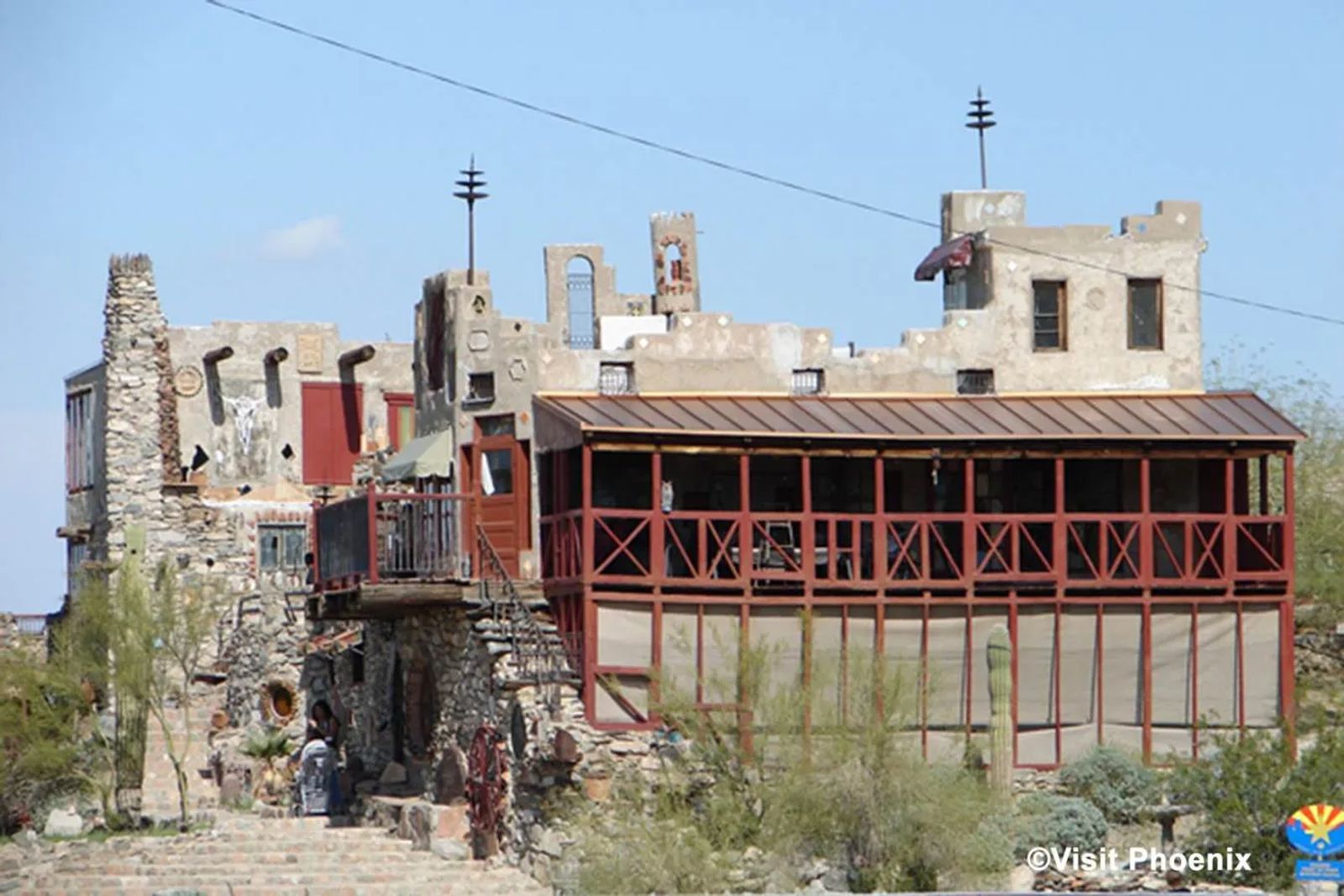
Mystery Castle
This is the former home of Boyce Gully, who was faced with the stark reality of having an early death. His daughter, Mary Lou, would often build sand castles on the beach in Seattle and would often ask her father to build her a real castle one day.
After he migrated to Arizona, he indeed did build a stone castle with 18 rooms, 13 fireplaces, parapets, and all sorts of nooks and crannies often including mysterious southwestern antiques smashed into the walls.
Sadly Mr. goalie died in 1945 before he could see the look on his daughters face when she realized he had built her, her fairytale castle. However, she did live in this castle up until her death in 2010. If you hear no other beautiful story today, I hope this one exhibits the true love this father had for his daughter and little princess.
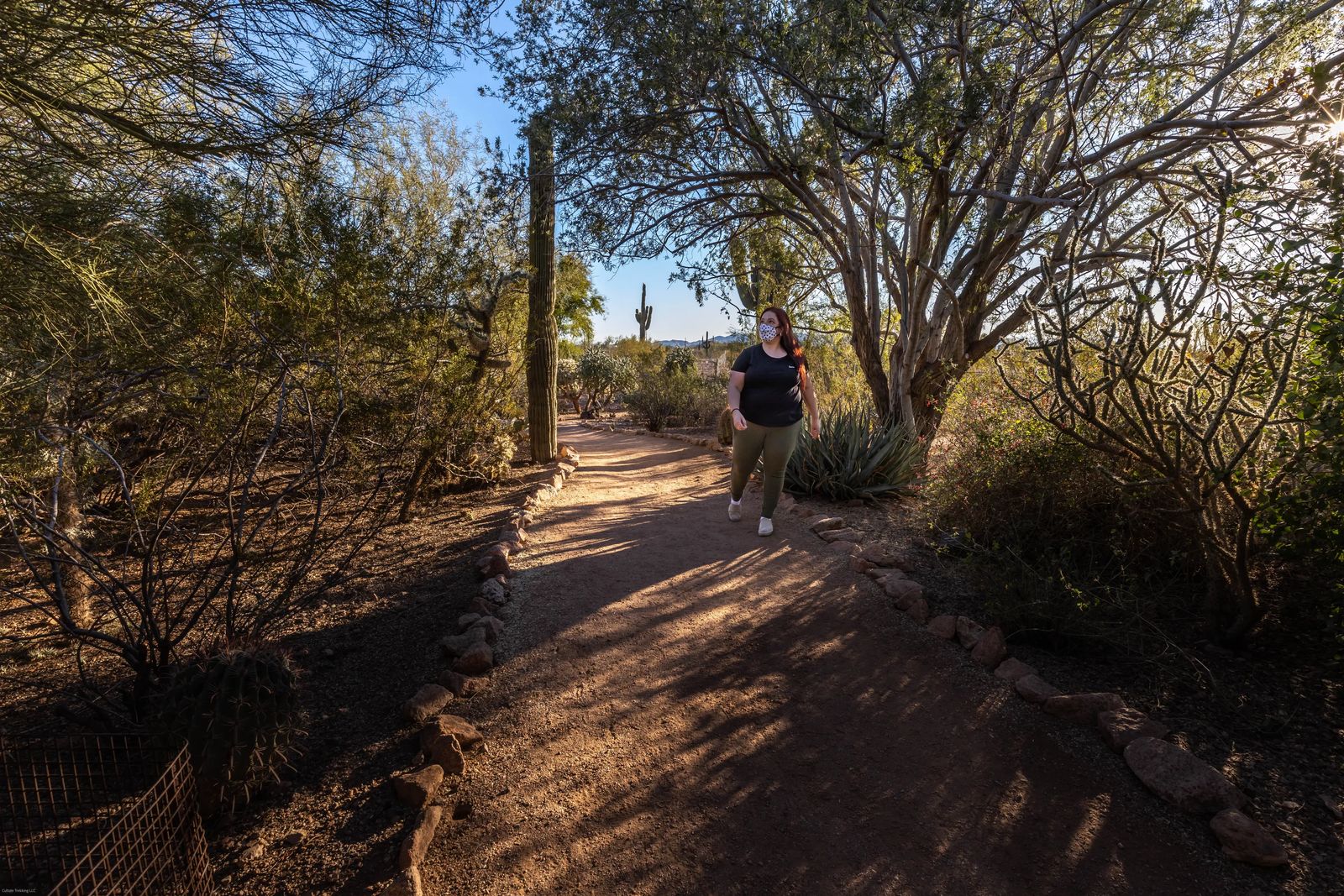
Desert Botanical Gardens
If you visit nothing else with your time in Phoenix, it should be at the Desert Botanical Garden. This garden is host to 50,000 different plants and five themed trails. These include the Desert Discovery Loop Trail, the Desert Wildflower Trail Loop, the Center for Desert Living Trail, the Sonoran Desert Nature Loop Trail, and the Plants and People of the Sonoran Desert Loop Trail.
The garden itself does not close until about 8 PM, so after you're done visiting the museums in downtown Phoenix, this is a great place to stop to learn about desert survival skills. My favorite in particular is plants and people of the Sonoran desert. This trail walks you through different desert habitats to discover how Native Americans and Sonoran desert people have used native plants for food, fiber, healing and housing.
It was actually the Native Americans of the area who taught the Calvary how to prevent scurvy by eating Cholla cacti. They would break the arms of the Choya cacti off, and throw them in the fire to burn the spines off. Once they had been in the fire for a few minutes they were pulled out and cut open and the pulp was eaten. This pulp contains a high amount of vitamin C, which if eaten in adequate amounts will prevent scurvy.

I used to think desert landscapes were quite boring, but after visiting Arizona I realized how much biodiversity exists there if you know where to find it. Plus being from Utah, it is always good to learn about native plants and desert survival skills if the worst should happen while camping or traveling.
Although the tickets are around $30, and can seem quite pricey, it definitely is worth the price. Whenever I go back to Arizona this will be one of my first stops so I can continue to learn about native plant species. I would highly recommend spending at least two or three hours here, and even sign up for a class if you're able to. There are restrooms, snack shop, restaurants on site, and many of the trails are wheelchair accessible.
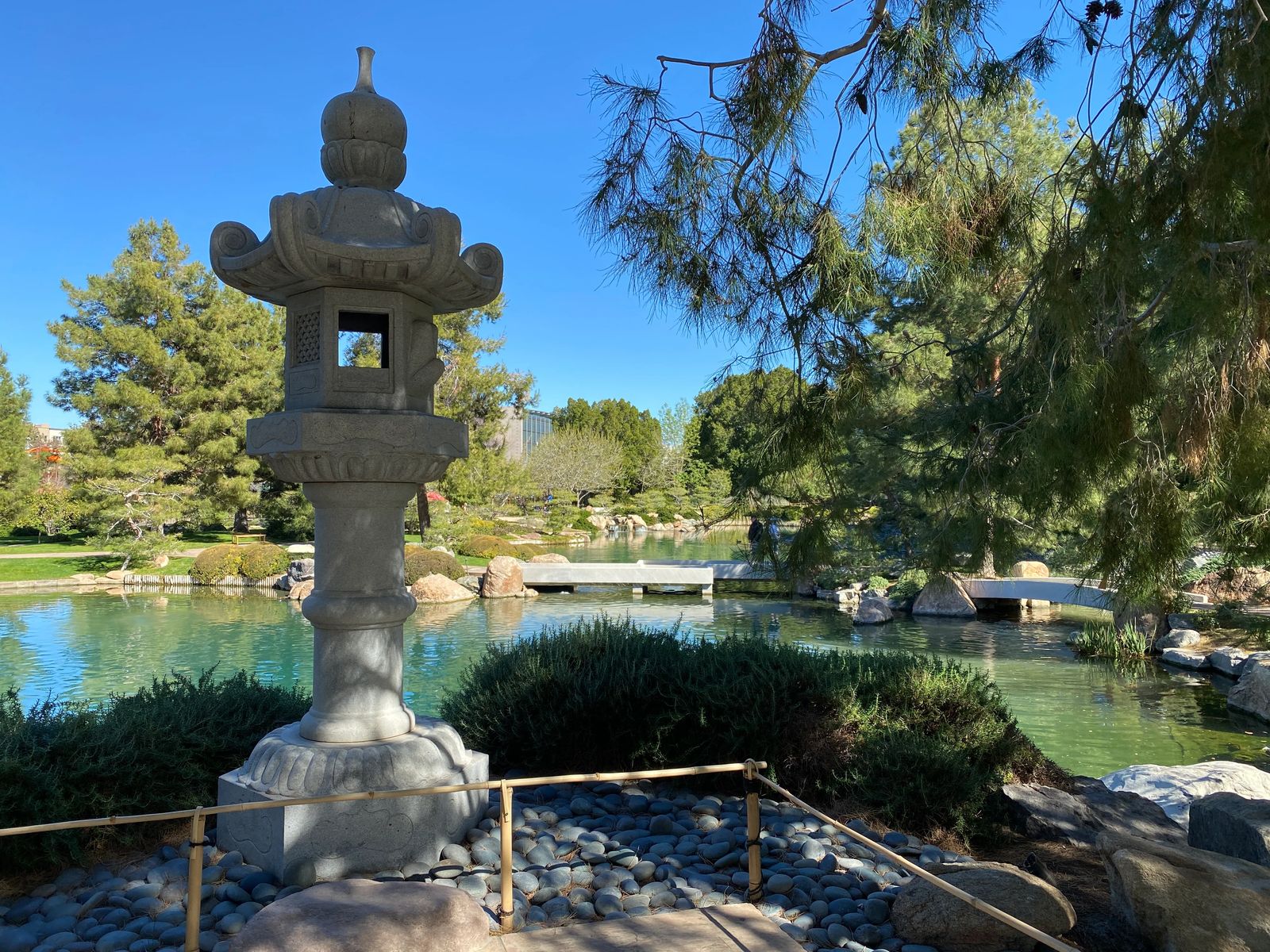
Japanese Friendship Garden & Tea Ceremony
I really wanted to love the Japanese friendship Garden, unfortunately I feel torn about even putting it in this guide, let me explain why.
If you're looking for a quiet place to get away from the city hustle and bustle and have a moment of reflection then definitely come here. If you were also looking to have a public Tea ceremony experience, make sure to visit between October and June. You'll get to wear a kimono in the Mousoan Tea House, which in and of itself would warrant a trip to this garden, just to take part in a cultural immersive experience.
The garden was established in 1987 to build and strengthen the friendship bonds of Japanese people to the United States government. All the decorative features you see in the garden required hundreds of thousands of hours to design and construct; the features are gifts from the city of Himeji and its citizens.
They do have an etiquette which you are required to maintain in the garden which includes speaking quietly, refraining from running, not sitting on any grass or cement structure that is not a metal bench. You also are discouraged from eating, or talking on your cell phones, Or smoking, or throwing coins in the pond, and animals are not allowed in the garden. It is around $15 to enter and the garden itself could take about 30 minutes to walk through without stopping. If you are there during the heat of the day there are only about six benches for the whole garden that are in a shaded area.
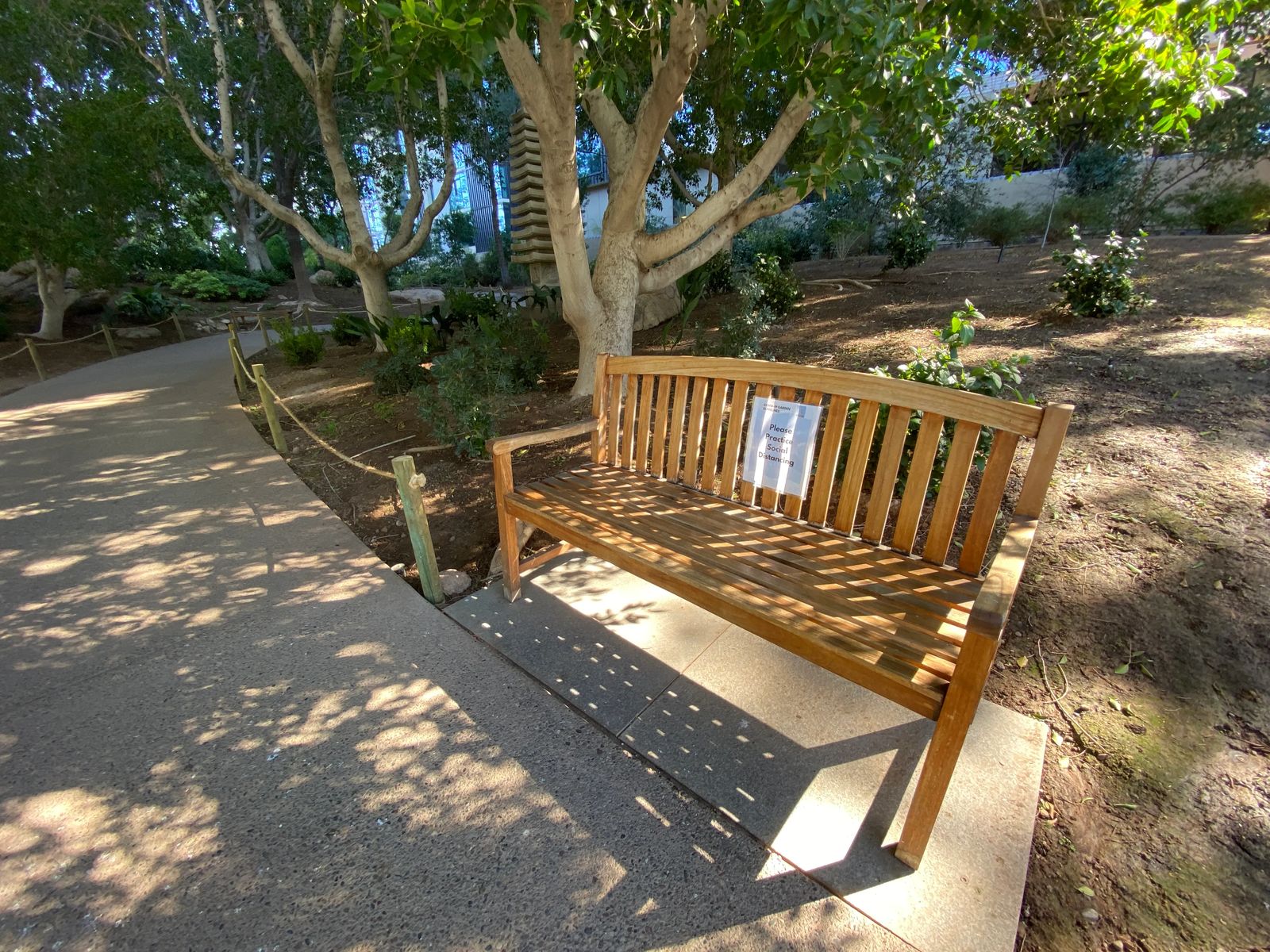
They also do not allow filming if it is for commercial purposes, and DSLR cameras are not allowed in the garden unless you pay a commercial fee (this includes photos for weddings). If you do buy a commercial license you are given a tour of the garden and shown very specific areas where you are allowed to take photos, and where you can step off of the path.
So as you can see being a content creator and a dog lover I felt a little frustrated and that I couldn't completely enjoy the garden the way that I wanted to. For some this might be a reprieve and a gift from heaven to step away from technology, but for me I just left feeling a bit frustrated by how small it was and the lack of places to quietly sit and contemplate as I have chronic pain in my feet.
If you decide to attend the Japanese friendship Garden just make sure you know all the rules before deciding to go - and you may have a better experience than I did. They have about 4-5 volunteers that circle the park at all times ensuring everyone is following the rules exactly. However, I do think it is worth a stop especially if you're going for a tea ceremony because it is quite beautiful and very peaceful and serene – which may be exactly the kind of ambience they like to maintain. I just wish they had more places to sit and didn't feel like I had hall monitors watching my every move.
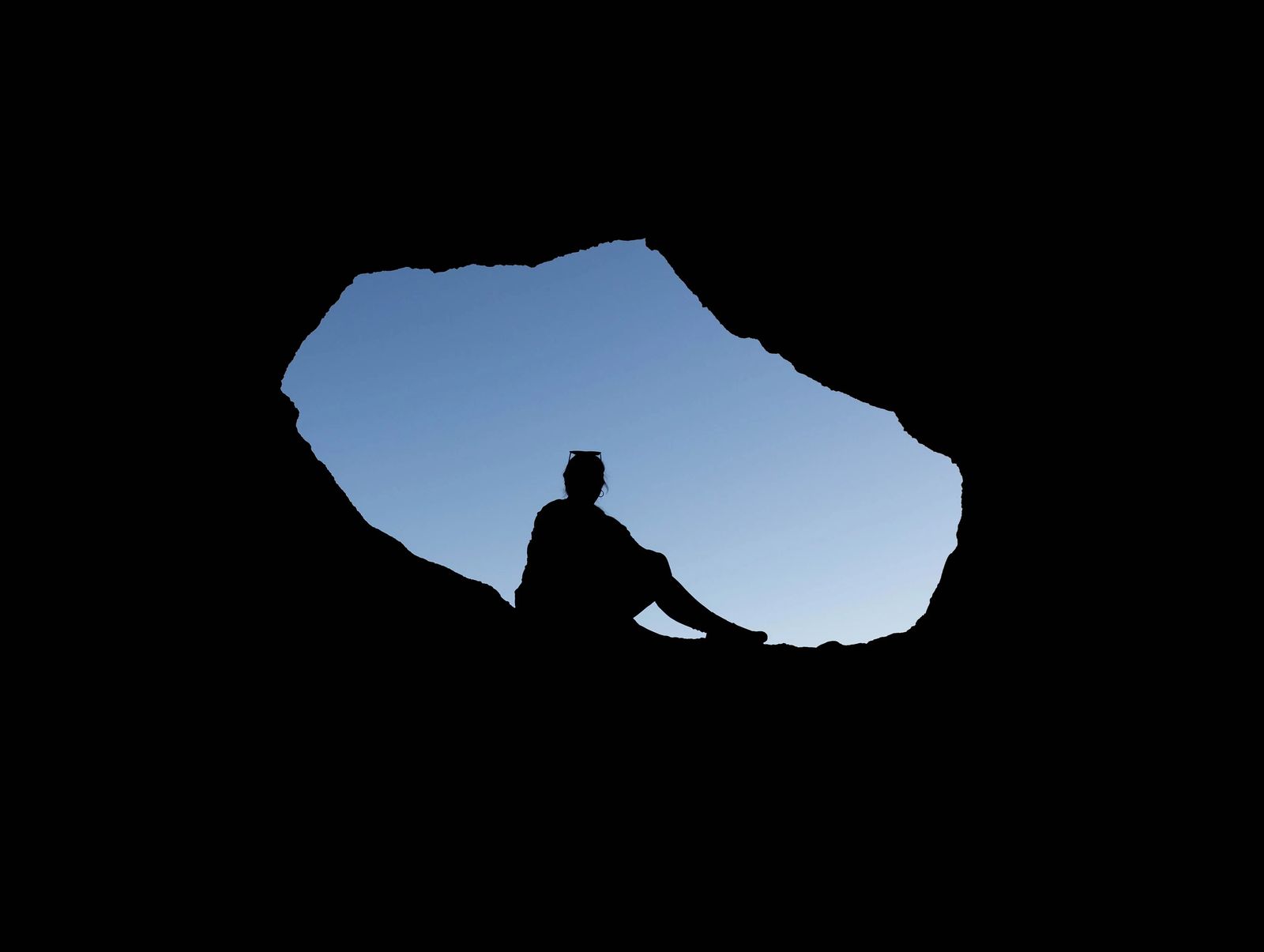
Papago Park Hiking and Fishing
Papago park is right near the desert botanical garden and it's a great place to go mountain biking, hiking and fishing. In fact the hole in the rock hike is considered a right of passage for anyone visiting Phoenix. While many people go at sunset to watch the incredible Arizona sunsets, I find it is just as beautiful as the sunrise and a lot less crowded.
The hole in the rock hike is about 0.1 miles and gains 200 feet in elevation. The hole in the top of the rock, was used by the indigenous Hohokam tribe to track the position of the sun through the hole in the rock as a way for tracking when to plant their crops.
It was also used as a prisoner of war camp for Nazis in World War II, and a makeshift VA hospital. During the great depression they use it as a Fish hatchery to help produce local food And combat starvation.
You could spend several days exploring the 1,500 acres of this park. Not only is there hiking and mountain biking, there is also a zoo, golf course, museums, baseball fields, lakes, and hundreds of desert plants. There is an interpretive nature trail with Sonoran desert flora and fauna on the east side of the park. The west side of the park there is a 2.3 mi. double Butte loop with picnic area restrooms and a bike rack.
I highly suggest going to the Pueblo Grande Museum and Archeological Park where you can explore 1000 years of history of the Phoenix area. They even have a prehistoric Hohokam platform and ballcourt, As well as replicated houses, hands on kids gallery, and American Indian arts.
While Uber and Lyft do access this area, I would suggest taking the light rail from Phoenix to this area and spend the whole day exploring.

Echo Canyon Trailhead
The Echo Canyon Trail Is part of the Camelback Mountain area. This is a 2.5 mile out and back trail located just outside of Phoenix in Scottsdale. The reason it's so popular is because there are wildflowers along the trail you're around and several Activities you can do along the trail. There is running, birdwatching, rock climbing, wildlife, and so much more.
This is one of the top areas to go rock climbing near Phoenix, so it does get very busy very quickly especially in the early morning hours. If you want to avoid the crowds try going before sunrise, or in the late evening. There is little to no shade on this trail so I do not recommend going during the heat of the day.
There are several people who recommend bringing gloves as there is a lot of scrambling required near the last half mile of the trail to the summit. If the trail seems too busy try going for the Cholla Trail or even other many hikes in this area (they're over 200 miles of trails right near here).

Camelback Mountain Hiking
Another hike that is considered a right of passage in Phoenix is hiking Camelback Mountain. It is located just 20 minutes from downtown Phoenix and kind of looks like the hump of a camel. There are two trails that you can use to hike this mountain one is the Echo Canyon Trail and the other is the Cholla Trail.
This is not a hike for the faint of heart, be sure you know what you're up against before you go as there are many people who are stranded or airlifted off this mountain every year.
Do not try to hike this trail in the heat of the summer where I can reach up to 110°F, and often stays at 90°F during the evening. I would suggest hiking in February and March as this is when the wild flowers will be blooming, but most other people will be trying to hide at that time as well.
If you are up for the challenge Echo Canyon Trail is shorter but also steeper, Choya Trail is 1.5 miles longer but also makes it a more gradual hike. Both trails are considered hard on Alltrails.
Both hikes are around 4.8 miles out and back with 2,618 feet of elevation gain over the course of the hike. There is typically no shade on the mountain dew to the desert climate. And no dogs are allowed on the train because of how crowded it can get and the difficulty level.
The parking on both trails is very difficult so I suggest taking an Uber or biking in. Be sure to wear a hat, sunscreen, and bring plenty of water at least 3 L per person. Bring a small snack for the top, and stay on the trails because there are rattlesnakes in the area. Also remember that the uphill hiker has the right of way.
If you do make it to the top you will have a 360° view of Phoenix and the surrounding area. However the trail is only open from dawn till dusk, so don't be one of those people who get stranded at the top, have fun and be safe.
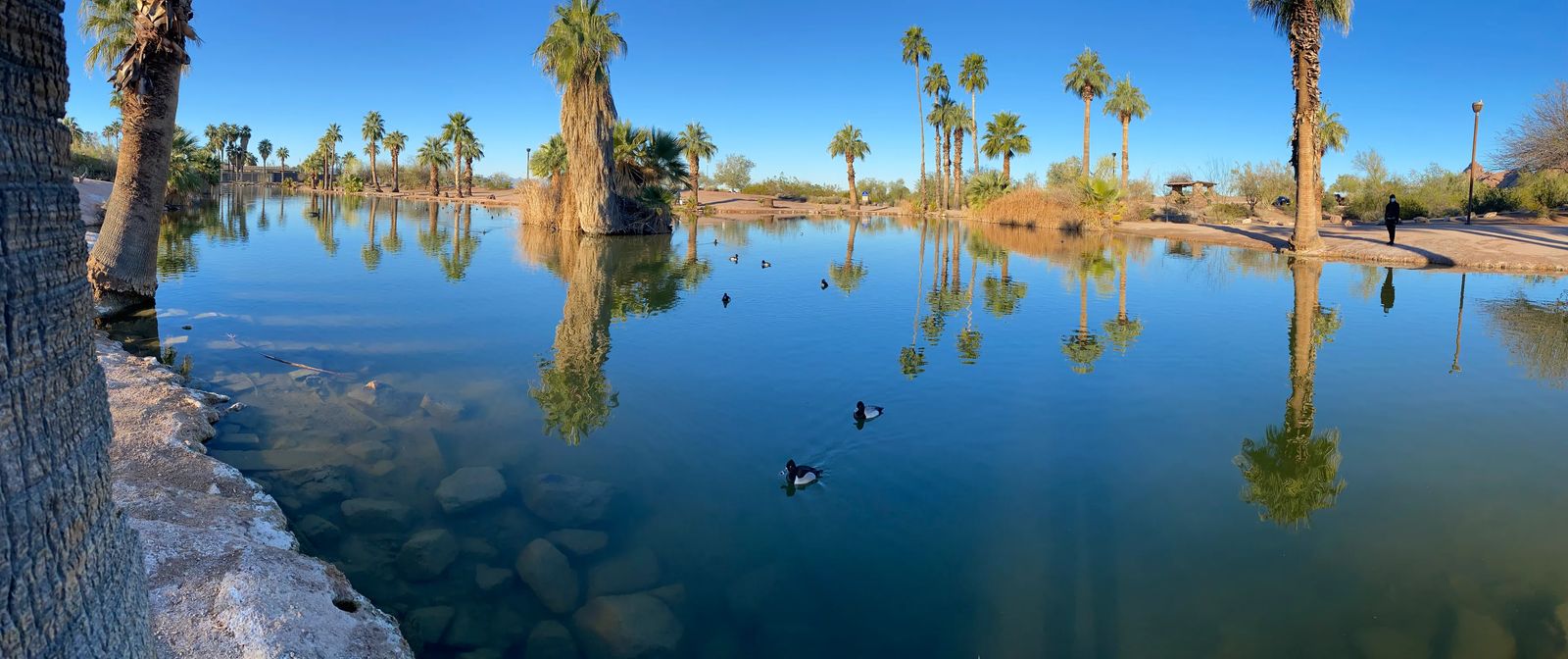
Other Arizona Tidbits
I wouldn't say that Phoenix was on the top of my list of places to visit, but I went down to visit my friend Bree who is a traveling nurse there at the time. I made a vacation of it, while she continued to work and thoroughly enjoyed myself.
Now I can say it is definitely a place I would go back to for hiking, Native American experiences, unique museums, and especially a romantic spa experience (well when my one-and-only finally decides to show up). So should you find yourself in the area, especially in spring fall or winter – know that there are plenty of places to see and do that are more fascinating than you would think.
As always if I missed anything that you would like to suggest please leave it in the comment section below. Happy travels and safe adventures friends. See you in the next one and if you're new here forget to subscribe.
Where To Stay Near Phoenix
Camping Spots Near Phoenix
I typically use the Dyrt App to plan out my camping trips wherever I go, because it not only tells you the price and availability but also tells you amenities that are available. If you do plan to camp in Arizona, I highly suggest you do not do so during the heat of the summer, even with air conditioning your A/C units may not be able to keep up with the summer heat.
Try to go camping in Phoenix in the Spring or Winter, and avoid the monsoon season (June-September). The top places that Visit Phoenix recommends to pop up that tent or RV is the Estrella Mountain Regional Park, Usery Mountain Regional Park, Cave Creek Regional Park, and the Coon Bluff Campground. It looks like they all have the best views with the best amenities nearby, but just double check they have what you may need for your own camping preferences before going.
Google Map Of Locations Mentioned
Like it? Pin it! Sharing is Caring ;)
.jpg?fit=outside&w=1600)
.jpg?fit=outside&w=1600)
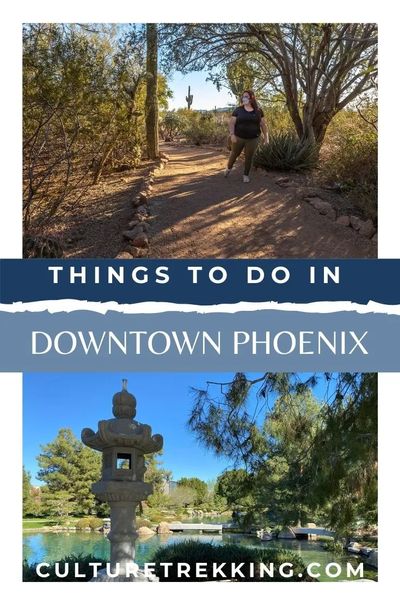.jpg?fit=outside&w=1600)
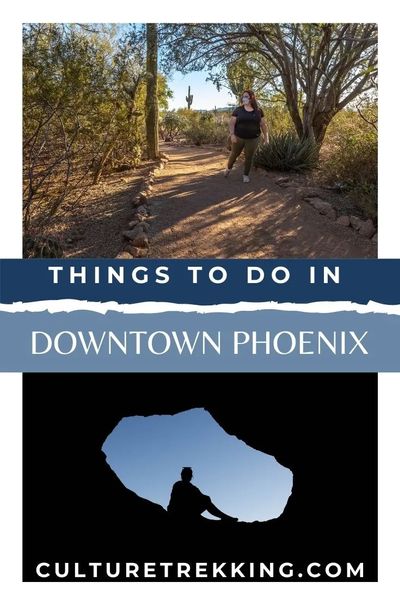.jpg?fit=outside&w=1600)
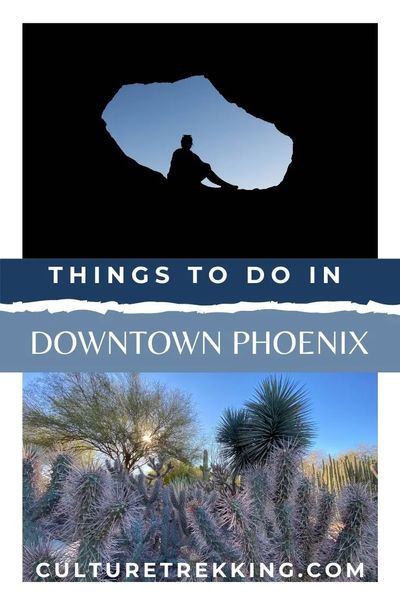.jpg?fit=outside&w=1600)
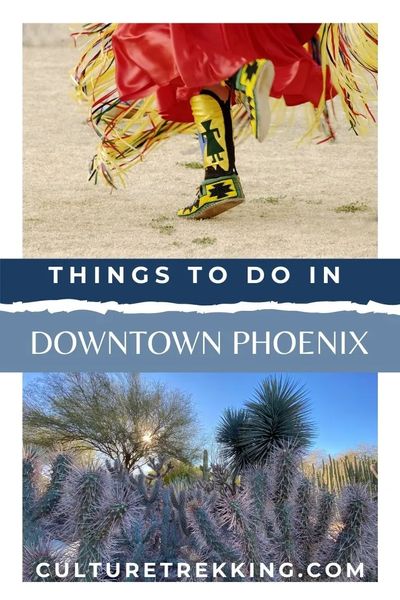.jpg?fit=outside&w=1600)
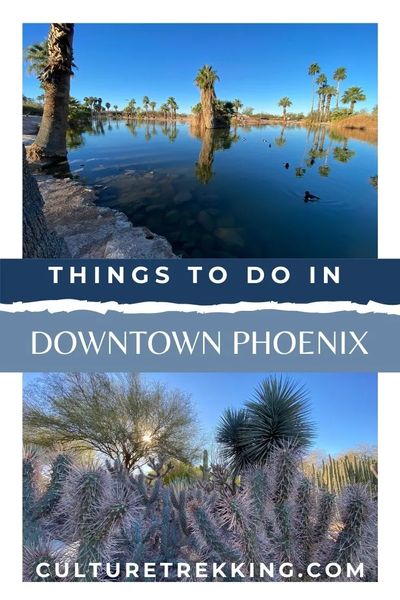.jpg?fit=outside&w=1600)
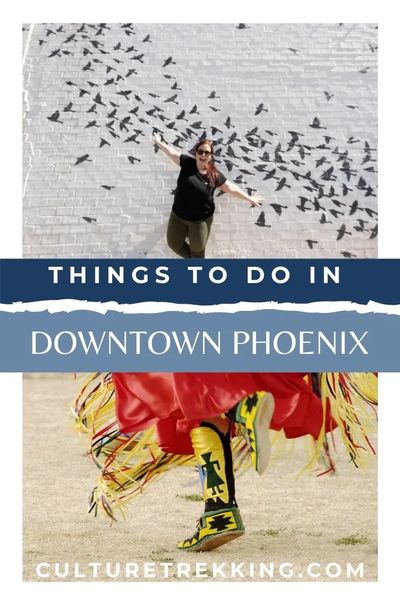.jpg?fit=outside&w=1600)
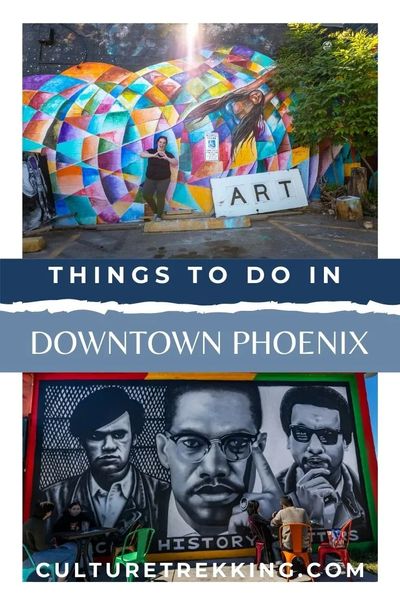.jpg?fit=outside&w=1600)
Latest Articles On Culture Trekking
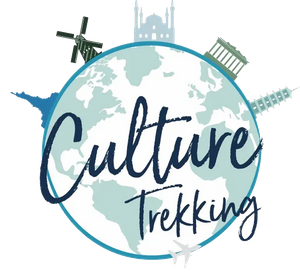

Welcome to Culture Trekking!
My name is Janiel, a leader in the travel industry with over 20+ years of experience with international travel. I specialize in solo female travel, cultural connections, sustainable adventures, food and history to help make your travel experiences fun, meaningful, and delicious. My experience in travel, and my personal story have allowed me to get published in Fodor's Travel, Atlas Obscura, Metro.co.uk, Trip Advisor, and multiple Podcast interviews. You can find me on pretty much every social media channel YouTube, Instagram, Twitter, Facebook, Pinterest, TikTok. To read more about me and my story click here. If you are a brand and would like to work with me, click here.












